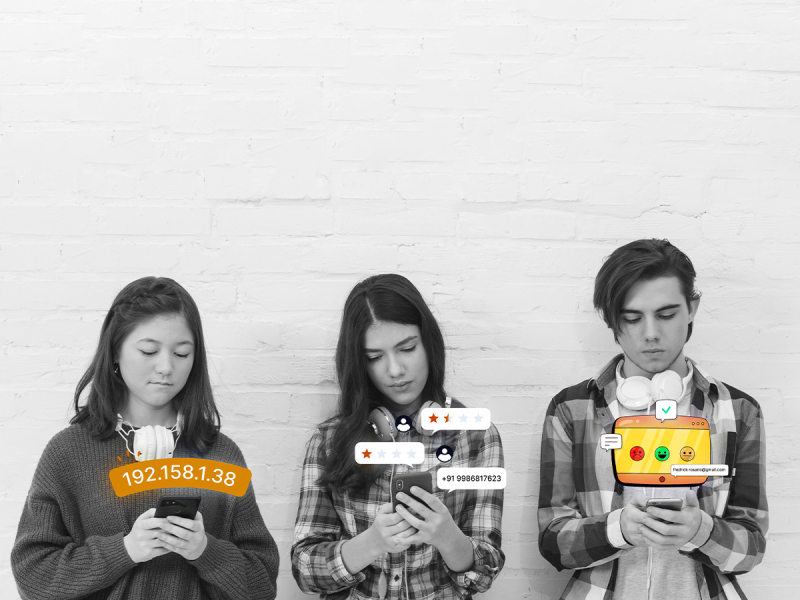Using website personalization to Boost Customer Engagement

Across all online platforms, including personalized website content, social media channels, or even their YouTube or Spotify premium playlist, 81% of consumers today expect brands to learn about them and offer them individualized content. Users yearn for a personalized experience that will speed up, simplify, and, above all, make their decision-making process intuitive.
However, some brands might still struggle with personalization. Mention reports that 83% of marketers say their biggest challenge is correctly implementing it. Customer Engagement by making personalized website might not appear as difficult now that AI-powered personalization platforms are available. The blog discusses some recommendations that should help your company create user-tailored content for your website to boost engagement.
Strategies to personalize your website
You can’t really personalize a visitor’s experience on a website without having the right kind of visitor data to support what you’re planning, so that is where the problem lies when it comes to website personalization. Your ability to create and add more individualized content to your website as well as boost engagement and sales will increase as you learn more about your visitors.
Below are some ideas which can help you in personalizing your website.
Collecting data of the visitors
The secret to boost customer engagement in a customer-centric and highly dynamic marketplace is the ability to grab the attention of your prospects while collecting the right kind of data and successfully using it to smoothen your marketing strategies. Additionally, businesses that can use this information to their advantage outperform their rivals by 85% in terms of sales volume and 25% in terms of gross margin.
It’s important to consider the type of visitor data you have to comprehend your prospects as you begin to develop a strategy to implement website personalization. After that, you can determine the most effective methods and ways to provide the experience the visitors expect by utilising the power of predictive analysis and machine learning.
Customer Profiling
The next step is creating customer profiles after gathering the visitor’s data from all the necessary sources. A customer profile, also referred to as a persona, acts as a thorough manual that explains the strategies you can employ to connect with your ideal target market. It provides you with a detailed understanding of your customers’ objectives and what they are searching for on your website, which can be used to develop more specialized messaging strategies that will appeal to them.
Goal Setting
Here’s where you start setting goals for your website and for each of your customer personas. Goals can range from boosting conversions to decreasing bounce rates, facilitating the discovery of products or services to encouraging repeat business, and much more. Additionally, your objectives may differ based on various audience segments, organizations and industry, and even geographical locations.
Creating a strategy
Preparing foolproof strategies to customize your website to increase customer engagement is, practically, where you start your personalization journey. Having a strategy streamlines your processes and systematizes your performances. It enables you to have a clear picture of the roadmap to your goal and doesn’t let you lose your track. As far as customization of the website is concerned, Homepage, Product Page, Search Results, No Search Results page and Shopping Cart Page are the pages that should be on your priority.
Implementing the strategy
Creating a strategy is not enough; thorough planning and implementation of the strategy are also required to boost engagement of the customers. After all of the preparation work has been completed, it is time to begin creating actual campaigns to carry out your personalization strategy. Write down all of the major goals for the website personalization program before it begins. Make a list of all the pages and elements you want to improve and customize.
After you’ve identified campaigns and made all of your other preparations, the next step is to create a system for prioritizing your written campaigns. Compare the expected effects of each campaign to the level of difficulty. Use the appropriate algorithms to optimize your campaigns. It is also critical to test and iterate on website personalization campaigns on a regular basis.
Measuring the success
It’s crucial to use the appropriate metrics to assess how well your website personalization is working. Not just in terms of charting the effectiveness of the campaigns you drafted and implemented, but also for figuring out your ROI channels and assessing how well they’re serving you.
Benefits of Website Personalization
The essential component to improving the user experience is personalization. Your users’ possibilities of entering the conversion funnel and becoming devoted customers increase the better you cater to their needs and wants.
The following are some advantages of customizing your website:
- Personalization of your website can improve your customer’s experience.
- You can get more qualified leads who are more likely to enter your sales funnel.
- By customizing your website, you can optimize your landing pages.
- Understanding your website’s visitors, prospects, and customers better and providing them with a personalized experience increases brand affirmation.
Conclusion
Web personalization is a field of knowledge that enables you to connect with your customers effectively and efficiently, engage with them, enhance your cross-channel marketing strategies, and multiply your ROI. Cubera can assist if you want to customize your website to give your customers a better experience. Your customers’ preferences can be understood and catered to by using Cubera‘s rich identity graphs and zero-party data.


